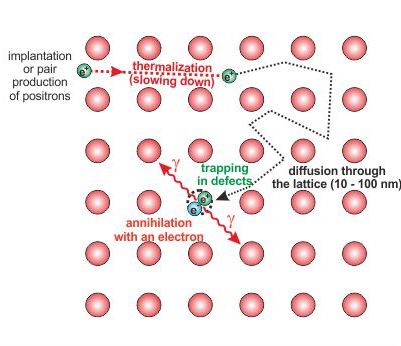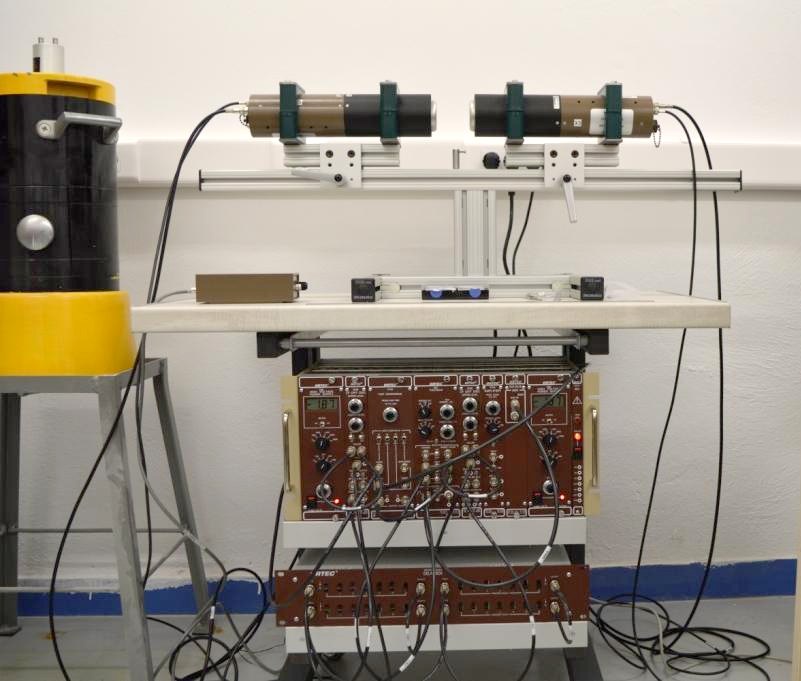Description
Positron annihilation lifetime spectroscopy (PALS) is used to investigate open volume defects in materials. Positrons created from a radioactive source (22Na) are incident on a material and they get thermalized, i.e. lose kinetic energy, through scattering events. Defects, such as vacancies, voids and dislocations, act as traps for the thermalized positrons due to the absence of positively charged nuclei at these sites (Fig. 1). As a result of the reduced electron density at these sites, the positron annihilation lifetime is increased for these trapped positrons, and can be related to the size/type of defect.
The positron lifetime of a single event is measured by detecting the time difference between the birth γ-quantum of the β+-decay in the 22Na source and one of the annihilation γ-quanta of an energy of 511 keV. The apparatus used is depicted in Fig. 2.

Fig. 1: Schematic of positron implantation, thermalization and annihilation in matter
Other Infrastructures
See all the Labs
See the list



